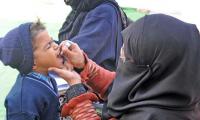Air containing an extreme level of moisture started heating up in Karachi on the morning of Sunday, June 23, when temperatures soared to 40 degrees Celsius while sea breeze stopped blowing due to a low-pressure area in the Arabian Sea near the Indian coast of Gujarat, raising the heat index in Karachi to above 50 degrees Celsius.
“Extremely high moisture content from the Arabian Sea had been pumped into the air over Karachi on the night between June 22 and June 23. Suddenly, in the morning, the sea breeze stopped. With no air from the sea to clear the moisture from Karachi’s skies, it started heating up after temperatures rose to 40 degrees Celsius, making people feel as if they were inside a heated pressure cooker,” Dr Ghulam Rasool, former director general of the Pakistan Meteorological Department (PMD), told The News on Saturday.
Hundreds of people have reportedly died due to heatstroke during the ongoing heatwave that has gripped Karachi since Sunday, June 23.
Whereas, some welfare organisations claim that the death toll due to the heatwave is as high as 800, the provincial health department states that only 35 people have so far died due to heatstroke and related causes as per the data from four leading public health facilities.
Health experts believe that over 90 per cent of the people who died from heatstroke never managed to reach hospitals and either died on roads or at home.
Dr Rasool, now serving as an adviser at the China-Pakistan Joint Research Centre at the Quaid-e-Azam University, Islamabad, claimed that although the ongoing heatwave in Karachi has not been as severe as the one witnessed in 2015, it is longer in duration and has caused extreme agony to people in the port city for the entire week.
“This time, the temperature rose to a maximum of 41-42 degrees Celsius, unlike in 2015 when the maximum temperature rose to 45-46 degrees Celsius. But this year, the duration was longer compared to the 2015 heatwave,” he said.
Dr Rasool warned that the frequency of heatwaves is expected to rise in the years to come. He advised people and authorities to focus on mitigation of and adaptation to changing climate conditions.
Sindh’s chief meteorologist Dr Sardar Sarfraz blamed a low-pressure area in the Arabian Sea for the heatwave that started on June 22-23, 2024, in Karachi. He said it stopped the sea breeze towards Karachi, causing moisture suspended in the air over the city to heat up under intense conditions, leading to suffocation and heat exhaustion for homeless people living on streets and those without electricity at home.
He explained that as the sea breeze stopped and humidity remained over 70 to 80 per cent, the heat index or the ‘feel-like’ temperature rose above 50 degrees Celsius. This was more than bearable for many people, especially those with compromised immunity, the weak and elderly, and those working under the sun. “We are hearing of deaths due to heatstroke, and most of these deaths occurred on roads, among people who live on streets, those who work under the sun, and people who were inside their homes but had no electricity to cool them off,” Dr Sarfraz said.
Health experts say heatstroke is a health emergency that can cause death within minutes to a few hours, depending on factors like age, health status, environmental conditions, and the speed and effectiveness of medical intervention.
“Heatstroke can develop rapidly, often within minutes to hours, especially during extreme heat conditions or vigorous physical activity. Initial symptoms may include high body temperature (usually above 40°C), altered mental state or behaviour such as confusion, agitation, slurred speech, irritability, delirium, seizures or coma, nausea and vomiting, flushed skin, rapid breathing, and a racing heart rate,” said Dr Khurram Nizami, a medical specialist.
According to Dr Nizami, without prompt treatment, the body’s temperature continues to rise, leading to severe heatstroke. During this stage, the body’s internal systems begin to fail, including the central nervous system and organs such as the liver, kidneys, and muscles.
“In severe cases, heatstroke can cause life-threatening damage within a few minutes to hours. Rapid progression can lead to multiple organ failure, brain damage, and death if the body temperature is not quickly reduced.
Quick action, such as moving the person to a cooler environment, initiating cooling measures like ice packs or cool water immersion, and seeking emergency medical care can significantly improve the chances of survival,” he explained.
Policemen stand guard along a street in Karachi ahead of the general elections on February 1, 2024. — AFPA judicial...
Sindh’s CM Syed Murad Ali Shah addresses the 33rd convocation of the NED University on October 29, 2024. —...
Representational image shows a police tape at a crime scene. — AFP/FileThe body of a 60-year-old man was discovered...
This image shows KWSIP's workers working on a water supply pipeline site on October 5, 2024. — Facebook@KWSSIPThe...
Former Prime Minister Shahid Khaqan Abbasi speaks during an interview in Karachi. — APP/FileFormer prime minister...
Incarcerated Pakistani scientist Dr Aafia Siddiqui. — Facebook@FreeAafiaSiddiquiNow/file The Sindh Assembly on...







